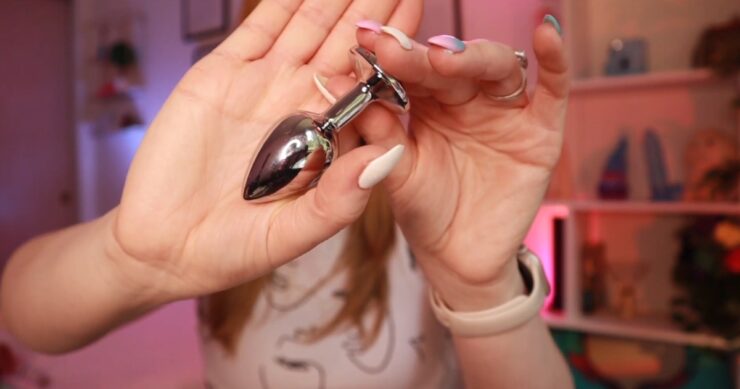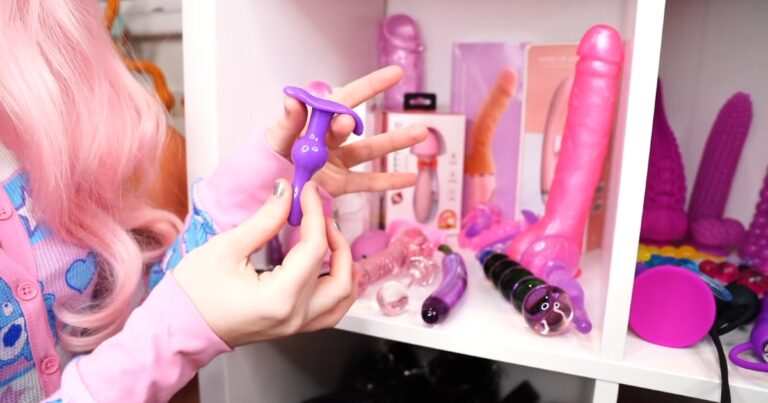We are confronted with a complex tapestry of preferences and practices that vary significantly between genders. The proliferation of sex toys has opened up new avenues for personal exploration and satisfaction, magnifying the intricate interplay of psychology and physicality in sexual health.
While men and women both wield these tools of gratification, their habits, motivations, and the resulting impact differ, presenting a fascinating dichotomy that warrants a comprehensive examination.
Our society’s advancing openness towards sexual wellness has seen a dramatic increase in the acceptance and use of sex toys among both men and women. If you are interested in checking out some of these products, click here.
This increased prevalence raises questions about how these products affect our sexual well-being and interpersonal relationships. We navigate the nuances of these intimate choices, unraveling how patterns of consumption, societal influences, and personal preferences converge to shape the overall experience of sexual pleasure across genders.
Key Takeaways:
- Examining sex toy use reveals differing patterns and impacts on men’s and women’s sexual well-being.
- Acceptance and prevalence of sex toys have grown, suggesting a shift in societal attitudes towards sexual health.
- Understanding the psychological underpinnings of sex toy usage informs our view on modern sexual habits.
Emergence and Prevalence of Sex Toys

In examining the spread and acceptance of sex toys, we observe a distinct shift from niche to mainstream, influenced by cultural attitudes and market forces.
History and Evolution in Pop Culture
Sex toys such as vibrators and dildos have seen a remarkable journey from taboo to acceptance. Initially, vibrators appeared on the scene as medical instruments in the 19th century, and by the 20th century, they found their way into popular culture.
During this transition, media portrayal played a pivotal role in influencing public perception. Films, television, and literature began to acknowledge and even normalize their existence, contributing to their widespread acceptance.
- United States: The U.S. has been particularly influential in the sex toy industry’s growth, where shifting attitudes have increasingly viewed these products as commonplace elements of sexual wellness rather than shameful secrets.
- India: In contrast, cultural and legal hurdles have long influenced the prevalence of sex toys. However, even in more conservative societies like India, there’s a growing movement of normalization, albeit at a more gradual pace.
Current Market and Industry Trends
The sex toy industry has seen exponential growth, and market analysis reflects this trend. In recent years, the destigmatization of sex toys has been accompanied by ambitious marketing strategies that target a diverse customer base.
- Vibrators and dildos remain the most popular categories, with companies continually innovating in design, functionality, and inclusivity.
- Effective marketing is at the heart of the success, using mainstream media to reach a wide audience and normalize these products.
- The industry’s push toward the mainstream market benefits from the ongoing breakdown of stigma around sexual health and pleasure.
- Statistically, the industry has burgeoned, reflecting changing societal norms and increased comfort with sexual expression.
Reliable market data underscores the progression and pervasiveness of sex toys in modern society. We’ve watched as sex toys have stepped out of the shadows into the limelight, championing sexual autonomy and well-being.
Psychological and Social Perspectives

Furthermore, we must explore the psychological and social contexts that shape these behaviors.
The Role of Media and Education
Media portrayal and sexual education play crucial roles in shaping our perceptions and attitudes towards sex toys. Media often reflects and can influence public opinion, offering either progressive views that normalize sexual health devices or conservative perspectives that can perpetuate stigma.
In terms of education, comprehensive sexual education that includes discussions around sexual pleasure and devices can enhance understanding and promote healthy attitudes, whereas incomplete or abstinence-focused education might limit awareness and acceptance.
Educational outreach has been shown to improve self-esteem and sexual health knowledge.
Progressive sexual education tends to correlate with a more nuanced understanding of mental health and intimacy.
Stigma and Acceptance Across Cultures
The stigma around the use of sex toys persists across various cultures, affecting both self-esteem and sexual health. Acceptance levels can vary greatly:
Acceptance:
- Higher in cultures with liberal attitudes towards gender and sexuality.
- Promotes healthier conversations around sexual needs.
Stigma:
- Often linked with feelings of shame.
- Can deter individuals from exploring their sexual well-being.
Gender Differences in Sexual Device Utilization

Different genders report varying levels of usage and attitudes towards sex toys, influenced by social factors and psychological comfort. Studies suggest:
- Men may face shame or stigma regarding the use of sex toys for pleasure, which can impact their self-esteem and willingness to explore sexual health options.
- Women are often targeted by marketing and are more likely to receive social support for sexual device use, contributing to a greater acceptance and utilization rate.
Through our lens, we further understand the importance of psychology and social dynamics in shaping the ways men and women engage with sex toys.
Patterns of Use and Consumption
In this section, we will explore the specific ways in which sexual habits involving toys differ among men and women, how these habits are influenced by one’s relationship status, and their impacts on sexual satisfaction and function.
Men vs. Women: Divergent Habits
In our examination of sexual behavior, we note that men and women display distinct patterns in the usage of sex toys. Women often report using vibrators for both vaginal and clitoral stimulation, with a considerable focus on devices designed for external use.
On the contrary, men showcase a varied spectrum of uses, ranging from enhancing masturbation to exploring penetrative toys designed for their pleasure.
Women:
- Vibrators are primarily utilized for clitoral stimulation, often with multiple speed and pattern settings.
- Dildos are used for penetration or external use; less frequent than vibrator use.
Men:
- Masturbation sleeves are common for solitary sexual activity.
- Prostate massagers emphasize internal use and are gaining popularity.
Influence of Relationship Status on Toy Usage
Relationship status significantly affects the characteristics of vibrator use among both heterosexual and other partnership arrangements. Single individuals might rely more on sex toys for sexual satisfaction, while those in sexual partnerships may incorporate toys as a facet of their shared sexual experiences.
Single: Higher likelihood of using toys for personal gratification and exploration of sexual preferences.
In a relationship: Use of toys reported as a component of a couple’s sexual activity, potentially enhancing mutual satisfaction.
Impact on Sexual Satisfaction and Function
The impact of sex toys on sexual satisfaction and sexual function offers a complex portrait. We find that individuals utilizing sex toys may experience an increase in sexual satisfaction, indicating a positive relationship between toy usage and sexual well-being.
Sexual Satisfaction:
- For women, vibrators contribute to increased self-awareness and satisfaction during solitary use and within sexual partnerships.
- Men report a variation in satisfaction linked to the type of toy and its use, whether for solo or partnered activities.
Sexual Function:
- Enhancements in function have been reported with consistent toy use, influencing factors like arousal, ease of orgasm, and comfort with sexual expression.
As we delve into the intricate aspects of sexual well-being, it’s essential to recognize how lifestyle choices extend beyond pleasure, influencing broader facets of life, including nurturing reproductive health – a topic explored more thoroughly in a companion piece.
Sexual Health and Well-being

In our examination of sex toy habits among men and women, we recognize the profound impact these devices have on sexual health and well-being. They are not only instruments of pleasure but also vital tools for improving sexual function and communication between partners.
Enhancing Sexual Intimacy and Communication
Sex toys often serve as a medium through which partners can explore and express their sexual desires more openly. Our use of these devices can lead to enhanced sexual intimacy, where being vulnerable and experimenting together strengthens the bond between individuals.
By including toys in our sexual experiences, we facilitate honest sexual communication, allowing us to articulate preferences and discover new pathways to mutual pleasure, including orgasms.
- Masturbation provides a private space to understand one’s body, which can then be communicated to a partner.
- Sexual pleasure shared in this context can deepen trust and emotional connection.
Mitigating Sexual Dysfunctions
For individuals experiencing sexual dysfunction, sex toys can offer significant benefits. For men, they can be a source of aid in circumstances like erectile dysfunction, and for women, especially for those with female sexual dysfunction, such aids can be indispensable in addressing challenges related to arousal or orgasm.
Vibrators and other toys can alleviate symptoms by promoting blood flow and sexual arousal, essential for sexual health.
In cases of sexual dysfunction, these tools provide alternative routes to achieve sexual pleasure and satisfaction without the pressure of traditional intercourse.
In both subsections, our focus is on how sex toys contribute to and help maintain a flourishing sexual well-being, which goes beyond the act of sex itself and impacts our overall quality of life.
FAQs
What is the pleasure gender gap?
The pleasure gender gap refers to disparities between genders in experiencing sexual pleasure. Studies suggest that heterosexual women report lower rates of satisfaction compared to men, which may be influenced by societal norms and personal expectations regarding sexual encounters.
What is the gender happiness paradox?
The gender happiness paradox explores the phenomenon where despite improvements in gender equality, women may not necessarily report higher levels of happiness. In the context of sexual well-being, this paradox may be related to the pressure of conforming to certain ideals of sexuality and pleasure.
Is female pleasure important?
Female pleasure is integral to overall sexual wellness and equality. Acknowledging and prioritizing female pleasure challenges historical taboos and can enhance interpersonal relationships, personal satisfaction, and psychological health.
Does the gender gap still exist?
Despite advances towards gender equality, the gender gap persists in various forms, including sexual health and pleasure. Differences in education, cultural attitudes, and access to resources contribute to an ongoing disparity in how men and women experience and engage with their sexuality.
The Bottom Line
We’ve observed distinct differences in usage between men and women. We found that men and women approach sex toy usage with varying frequency, purpose, and satisfaction outcomes. Our assessment also reveals societal implications and health concerns that warrant attention.
Men typically view sex toys as supplementary to their sexual experiences, while women often use them as integral components of personal exploration and satisfaction. The diverse range of products available reflects the nuanced preferences across both genders.











